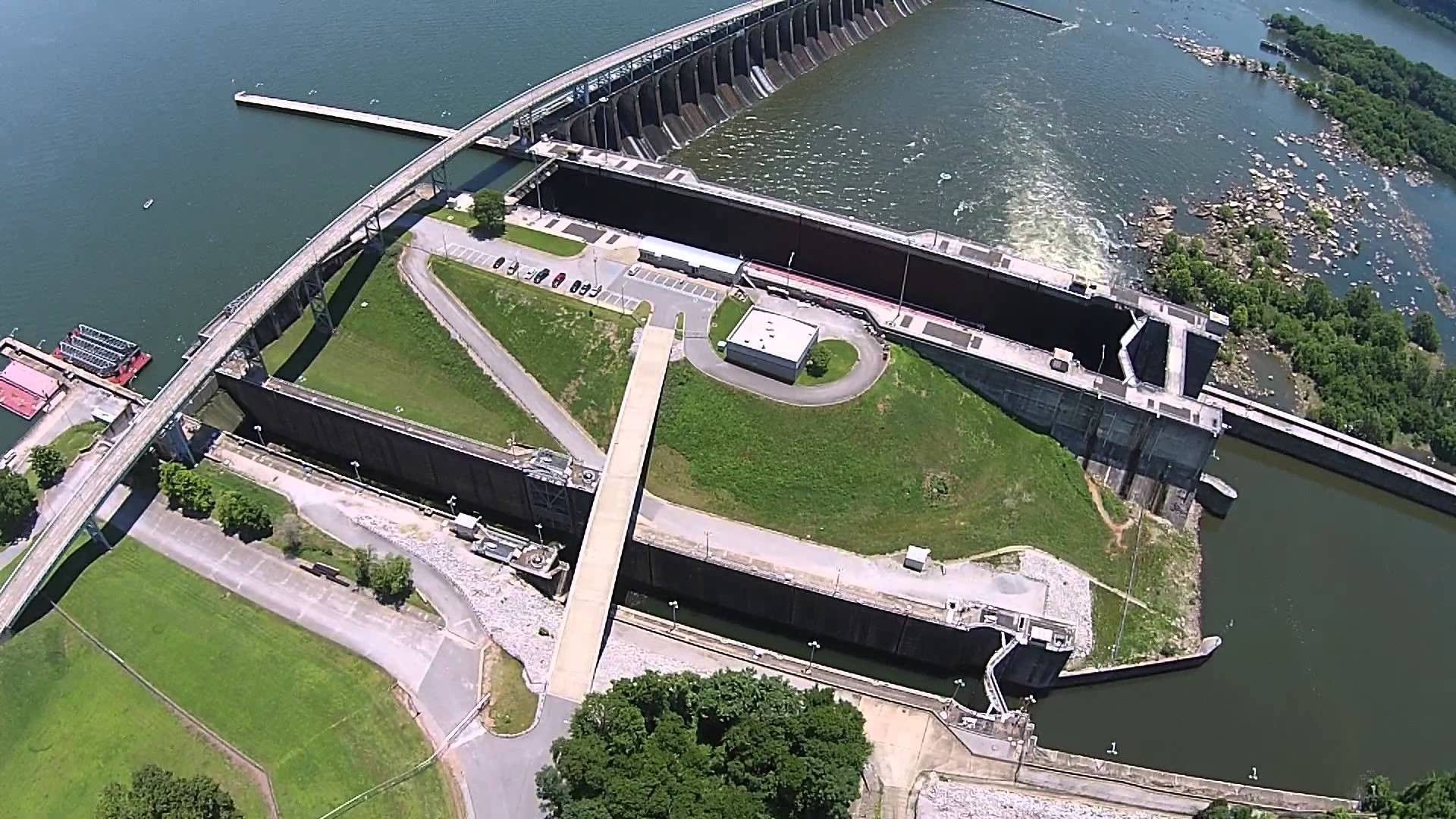In the best-case scenario, the main chamber at Wilson Lock on the Tennessee River could be open in early to mid-December. In the worst, it could take months longer.
That was the update from the Nashville Engineer District at the Tennessee River Valley Association and Tennessee-Cumberland Waterways Council annual meeting October 1 in Franklin, Tenn. Weekly conference calls are being scheduled to continue to provide information.
Brian Mangrum, chief of the district’s technical support branch, said part of the uncertainty is that crews haven’t yet determined what is causing steel to crack on the lower portion or “heel” of the lower miter gates, near the pintle casting. Only steel and not concrete is cracking, he said.
Operators at the lock, Mile 259.4 near Florence, Ala., noticed popping sounds at the lower gates while the chamber was filling and emptying, Mangrum said. That led to a dive team performing an inspection and finding cracks that were not seen when the lock was dewatered in 2002.
One crack was wide enough a diver could put a finger inside it, Mangrum said.
Wilson Lock has the largest single lift of any navigational chamber east of the Rocky Mountains at 93 to 100 feet, and the miter gates are old and heavy, weighing 650 tons, he said.
“It becomes really important for us to make sure we understand when we have a rapidly changing situation like this what’s going on and how to prevent further damage,” Mangrum said. “Our key goal in implementing this closure is to make sure that we don’t damage these gates to the point where they’re going to be out of service for potentially a significant amount of time.”
The Corps has been working closely with the Tennessee Valley Authority’s dam safety group to determine the path forward, Mangrum said. Among other measures, TVA is pulling instrumentation data to determine if there has been any lock monolith movement around the gates to help ensure that it is safe for crews, including divers, to be inside the chamber. The Nashville District was also discussing with the Engineering Research and Development Center whether the space is sufficient to allow using ERDC’s multibeam remotely operated vehicles inside the chamber and what additional data they might be able to provide.
A more detailed dive inspection that will include cleaning off the gates is scheduled to begin October 7, Mangrum said.
If it is safe to work inside the chamber, crews could arrive as soon as October 14 to get a closer look and try to determine what conditions will allow the lock to be safe to dewater as well to aid in drafting a repair plan.
Work must be completed on the downstream closure structure slot to allow dewatering, Mangrum said. That work was begun during a previous closure but not completed. Stoplogs necessary to dewater the lock cannot be set until it is, and currently some liners are missing, and there is wall armor damage.
“We cannot implement a lower closure of the lock and dewater it until we fix this slot liner, so we are gathering our resources to start that work,” Mangrum said.
Once the slot is repaired, curing will take three to four weeks until it can be used, he said.
As part of the repair plan, Mangrum said his team will have to determine if damage to the gates can be addressed through welding, which could take three or four weeks after dewatering, or whether some components must be replaced, which could take far longer.
When repairs begin, Mangrum said the plan would be for crews to work around the clock in two 12-hour shifts. The Regional Rivers Repair Fleet cannot arrive before November as it is currently in the midst of a job in Winfield, W.Va., where the skin has already been removed from a lock gate, Mangrum said. That job is scheduled to be completed November 8. The Corps is looking at delaying scheduled repairs at Barkley Lock on the Cumberland River, originally planned for early December, in order to fit in the work at Wilson instead.
Should the required repairs be more extensive, Mangrum said the light capacity fleet doesn’t have a crane with capability of lifting the gates. The Corps’ heaviest crane has a lift capacity of 550 tons, 100 tons less than required, so the work would either have to be contracted out or the gates disassembled, he said.
Wilson’s auxiliary lock, composed of two 60- by 300-foot chambers in a stair-stepped configuration, is open and staffed around the clock, Mangrum said. It was closed about 2 a.m. September 29 because of an electrical failure but reopened the following day.
The Corps’ lock queue report, available online, showed that as of the afternoon of October 2, the average delay for a tow to traverse the lock had grown to more than 86 hours, with eight vessels in the queue, including one with 15 barges. The auxiliary lock can send through one barge at a time, on average.
The Corps and TVA are working closely with vessels too large to fit in the auxiliary lock, including United Launch Alliance’s RocketShip, which had been scheduled to traverse the lock in November to deliver rocket stages as it travels from ULA’s Decatur, Ala., plant to Kennedy Space Center in Florida via the river system and Gulf. Additionally, American Cruise Lines rescheduled some cruise itineraries because of the closure as its vessels also will not fit in the auxiliary lock, Mangrum said.
Delivery of the first of three oceangoing spud barges to be used as a temporary guidewall for Wilson Lock also was expected within days and had to be diverted to Pickwick Lock as it also will not fit through the auxiliary chamber.




